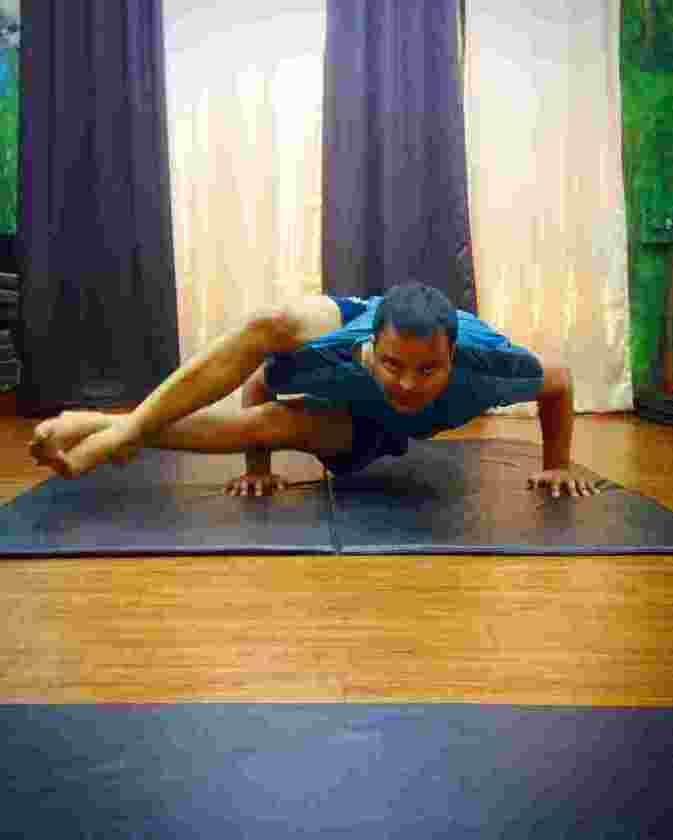Eight-Angle Pose (Astavakrasana)
Eight-Angle Pose (Astavakrasana)
4 Steps to Master Eight-Angle Pose (Astavakrasana)
Play with balance and strength as you move step by step into Eight-Angle Pose (Astavakrasana).
Benefit:
Strengthens your arms and upper back; tones your abdominals and inner thighs; stretches your hamstrings; makes you feel unstoppable
Step 1:
Come off your sticky mat so you can use the floor to slide around. Start out in a comfortable seated pose. Inhale to hike the left leg up on the left shoulder. Firmly press the leg into the arm to help fix it there; continue to hug the arm with your leg. (If your leg does not make it onto the shoulder, hold it with both hands at the highest point you can access, and breathe.
Step 2:
Exhale and plant your hands shoulder-width apart on either side of your hips. Keep the pressure of the left leg on your shoulder and inhale to cross the right foot over the left, hooking the ankles around each other. Your leg will likely slip off your shoulder—just make sure it sticks to your arm.
Step 3:
Press into your hands and exhale to slide your hips back along the floor and come into a gentle face plant. On an inhalation, look forward and lift both shoulders away from the floor, as you did in Chaturanga, eventually lifting your shoulders in line with your elbows.
Step 4:
Keeping your shoulders fixed in this position as best you can, exhale to press your top leg down onto your arm to lift your hips. Kick your heels forward to straighten your legs as you squeeze your left arm with both thighs (think ThighMaster!). If you squeeze the inner thighs powerfully, these actions alone should float you into the pose. (Note that the bottom leg tends to lag, so squeeze it firmly against the upper arm.) It’s OK if the weight of the legs pushes the shoulders down—just actively move the shoulders back enough to prevent them from getting overpowered. Breathe here for 3 full, deep breaths, and then bend your knees to help you lower back down. Repeat on the right side.
While Astavakrasana is a powerful upper-back strengthener, it’s important to have built up enough core and upper-back strength before trying it so that when you push up you are not dumping all of your weight into the weaker, more peripheral parts of your shoulder joints, elbows, and wrists. To avoid injury to these areas, take your time over weeks or even months to do Chaturanga Dandasana with good alignment, which will get your upper back and core in shape to bear weight safely in this peak pose.


